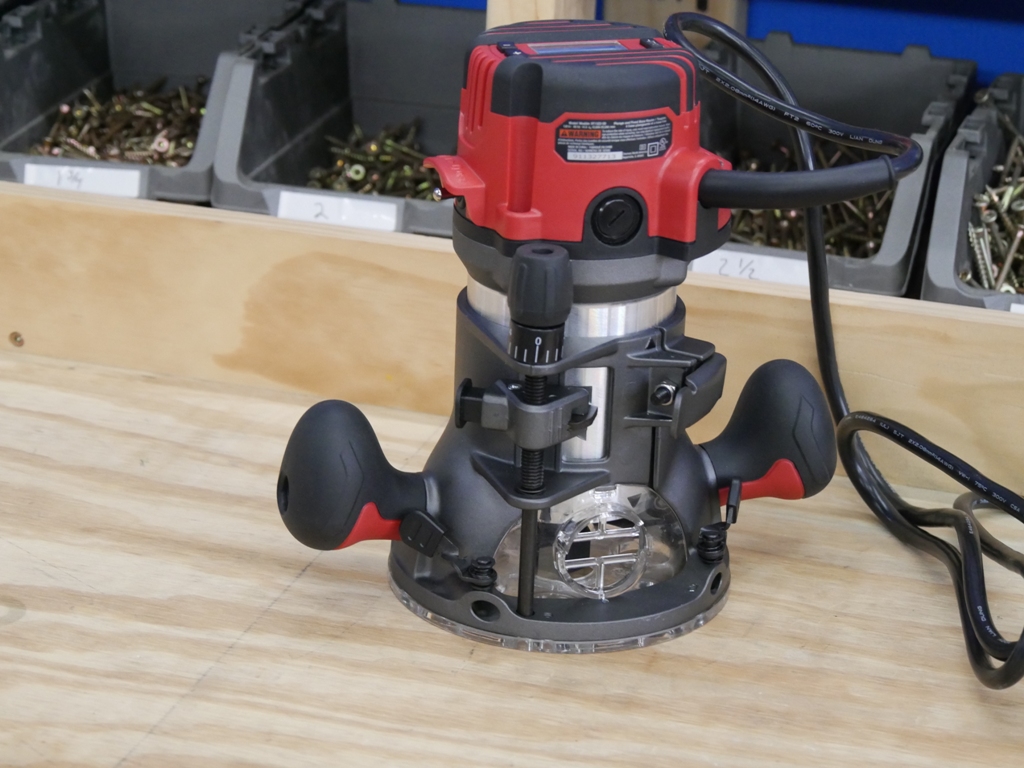What Is a Router?
A router is a high-speed, hand-held or table-mounted power tool used to hollow out, shape, or edge wood and other materials. It’s one of the most versatile tools in the shop. You can use it to create decorative edges, cut grooves, flush trim, cut joinery like dovetails or rabbets, and even carve or inlay. With the right bit and setup, a router can take your woodworking to another level.
This isn’t just a finishing tool, once you understand what it can do, you’ll find it belongs in almost every serious workshop.
History of the Router
Routers started as manual hand tools called “old woman’s tooth”—essentially a chisel blade set in a block. The electric router as we know it today evolved in the early 20th century, with the Kelley Electric Machine Company (eventually acquired by Porter-Cable) producing one of the earliest motor-driven models. Over time, manufacturers like Bosch, DeWALT, and Makita refined the motor design, base systems, and bit-changing mechanisms, making routers one of the most adaptable power tools for woodworkers.
What It’s Used For
Routers are used in a variety of woodworking and trim tasks. Common uses include:
- Rounding over or profiling edges on furniture or trim
- Cutting dadoes, rabbets, and grooves for shelving or cabinets
- Trimming laminate or veneer flush to edges
- Creating joinery like dovetails, mortises, or tenons
- Carving signs, decorative inlays, or recesses
- Shaping door panels or moldings
What to Look for When Buying
Fixed Base or Plunge Base
- Fixed Base: More compact, better for edge profiling and router table use
- Plunge Base: Ideal for cutting into the middle of material (e.g., mortises or inlays)
Horsepower and Motor Size
- Ranges from 1.25 HP to 3.5 HP
- Light-duty trim routers are smaller and easier to handle
- Mid-range or full-size routers are better for harder woods or large bits
Variable Speed Control
- Slower speeds help with large bits or delicate materials
- Fast speeds are ideal for small bits and quick cuts
Soft Start Motor
- Prevents the router from jerking at startup
- Easier on your hands and increases motor life
Depth Adjustment
- Precise depth control is key for joinery and edge work
- Some models offer micro-adjustment knobs for fine tuning
Collet Size
- Most routers accept 1/4 inch or 1/2 inch shank bits
- 1/2 inch bits offer more stability and less vibration
- Look for routers that accept both for more flexibility
Ergonomics and Balance
- Comfortable grips and good weight distribution matter when using the tool for extended periods
- Compact routers are better for overhead or detail work
Pros and Cons
Pros
Cons
Router Bit Compatibility
Routers use specialized bits for each task. Key types include:
- Straight bits: For grooves and dados
- Flush trim bits: Used with a bearing to match surfaces
- Roundover bits: To soften and finish edges
- Chamfer bits: Create angled cuts
- Rabbeting bits: For step-like cuts in edge work
- Cove, ogee, and decorative bits: For detailed trim work
- Joinery bits: Like dovetail, box joint, or mortising bits
Buy quality bits and keep them sharp. Dull bits lead to burn marks, tear-out, and rough edges.
Safety and Maintenance Tips
Who This Is For
- Homeowners doing trim, shelving, or cabinet work
- DIYers creating furniture, home projects, or signs
- Pros working in cabinetry, finish carpentry, or custom woodwork
If you're working with wood and want clean edges, strong joints, or custom finishes, a router is a shop essential.
FAQ
Yes, with the right bit and speed settings, but it’s mostly designed for wood and similar materials.
It depends. Plunge bases are better for starting cuts in the middle of material. Fixed bases are easier to handle for edge work or table-mounted use.
Not required, but router tables make repeatable cuts, profiling, and working with small pieces much easier and safer.
Final Thoughts
A router is one of the most versatile and rewarding tools in the shop. Once you learn how to control it, you can create professional-quality edges, joints, and finishes. Whether you're rounding over edges on trim or cutting precise joinery, the right router and bit setup can elevate your project from average to clean and professional. It’s not a tool you use once, it’s a tool that keeps finding new jobs.

